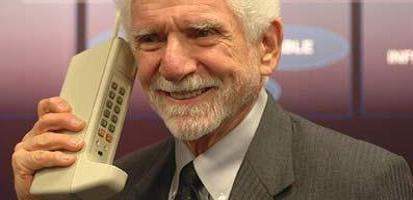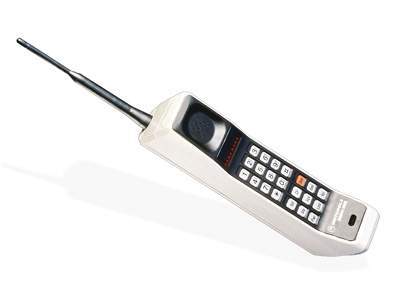Almost like clockwork, every decade brings us a new development in cell phone technology. Take a look at this timeline:

1973: Motorola unveils the DYNA-TAC, a 2.5 pound prototype cell phone.

1983: Motorola receives approval from the FCC for commercial cellular use and introduces the first cell phone for everyday consumer use. The Motorola DynaTAC 8000X is available for just $3,995.

December 1992 (nearly a decade later): A test engineer for the Sema Group in the UK uses his personal computer to send a text message (“Merry Christmas”) on the Vodaphone network to the phone of Richard Jarvis. This is the debut of Short Message Service (SMS) texting.

2003: The first commercial mobile SMS service is launched.
If the pattern continues, we should see some kind of cell phone advancement this year. We are certainly seeing a trend in mobile marketing. The push for mobile coupons is gaining momentum, and not just because retailers want to bring in more business. Consumers are begging for them.
Last spring, a report revealed that 55 percent of consumers expressed interest in mobile coupons but only 10 percent received one. Let’s combine that with incentives for checking in via location-based social networking sites (i.e. Foursquare, which just launched an app specifically for business managers) which can separate your business from the competition in the immediate area, and we’re starting to see the increased income potential.
A mobile coupon campaign launched by Harman Management proved successful in 2012. The group owns 126 A&W franchises on the west coast. Customers could opt-in by texting a code to a phone number. The SMS program saw 37,000 opt-ins in the first month. The hook? In return for signing up, users got a coupon for a free Papa Burger. A&W saw a 20% increase in revenue thanks to that coupon. Customers redeemed their coupon for a free burger but bought a drink and fries while they were there.
That’s just one example of how the trend of mobile couponing is working. With success rates like that, the trend is surely to move forward in 2013. Some estimates project mobile coupon redemption values around the world could top $43 billion by 2016.
Where to Begin?
So, where do you begin to increase your business and satisfy the demand of your cell phone wielding customers?
Build for Mobile – First, make sure you have the right kind of mobile site, whether it’s designed strictly for mobile, or created with a responsive design. Sending customers to a non-mobile optimized page can have disastrous results on the success of a mobile campaign.
Formulate Strategy – Second, formulate and deliver the appropriate marketing campaign to reach your current client base and attract potential customers. How will you make your customers aware of the mobile coupons? What offer is most engaging for a mobile customer?
Track Success – It’s difficult to know how successful your mobile campaign was if you haven’t taken the proper steps to track it. Make sure that you have goal conversions setup in Google Analytics, or whatever other form of analytics package you use.
At DBS>Interactive, we keep track of the trends and we’re always striving to stay ahead of them. Let us partner with you to tie together design, programming and marketing so our experience can produce a positive experience for your customers.
